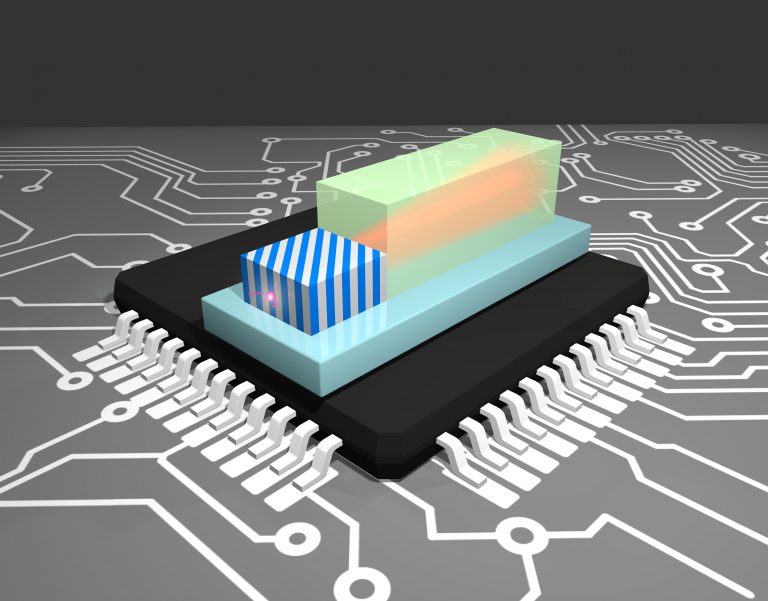
Quantum photonics involves a new type of technology that relies on photons which can potentially carry qubits over large distances. If the photon source could be placed on a single chip and made to produce photons at a high rate, this could enable high-speed quantum communication or information processing, which would be a major advance in information technologies.
Until recently, single-photon sources have usually been made from self-assembled quantum dots in semiconductors or from materials, like diamonds, with structural defects. It is difficult, however, to produce single photons at high rates from such materials. Some approaches to remedy this problem have been tried, but so far, the results suffer from a narrow bandwidth and low efficiency.
Researchers at American Institute of Physics have proposed a simple on-chip photon source using a type of material known as a hyperbolic metamaterial, which can overcome problems of low efficiency and allow for high repetition rates for on-chip photon sources.
Metamaterials are stacks of metallic and dielectric layers, structured at a level much smaller than the wavelength of light in use. They exhibit unusual optical properties when formed into shapes, such as nanowires. Electrons flowing through the material set up a collective oscillation known as a surface plasmon, generating localized electromagnetic fields.
Hyperbolic metamaterials are highly anisotropic versions of these metamaterials. They manipulate light in a variety of ways. For example, they can shrink the wavelength of light and allow it to travel freely in one direction while stopping it in another.
The scientists proposed a geometry for their on-chip photon source where a hyperbolic metamaterial is tilted at a precise angle with respect to the end facet of the nearby nanofiber used to transmit the emitted photons. By choosing the tilt angle carefully, light reflections are suppressed at the interface with the fiber.
Calculations by the team showed that this simple geometrical arrangement should overcome previous limitations with these materials.
This work represents a nice step toward the implementation of spectrally broad single photon sources with high repetition rates for on-chip quantum networks. (American Institute of Physics)
The article has been published in Applied Physics Review.
